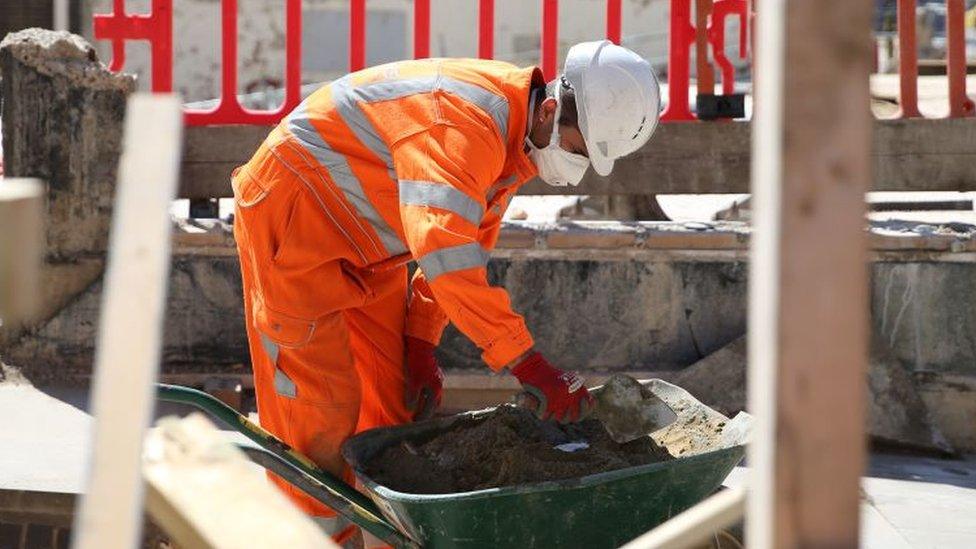Coronavirus lockdown advice 'lacks clarity', England's mayors say
- Published
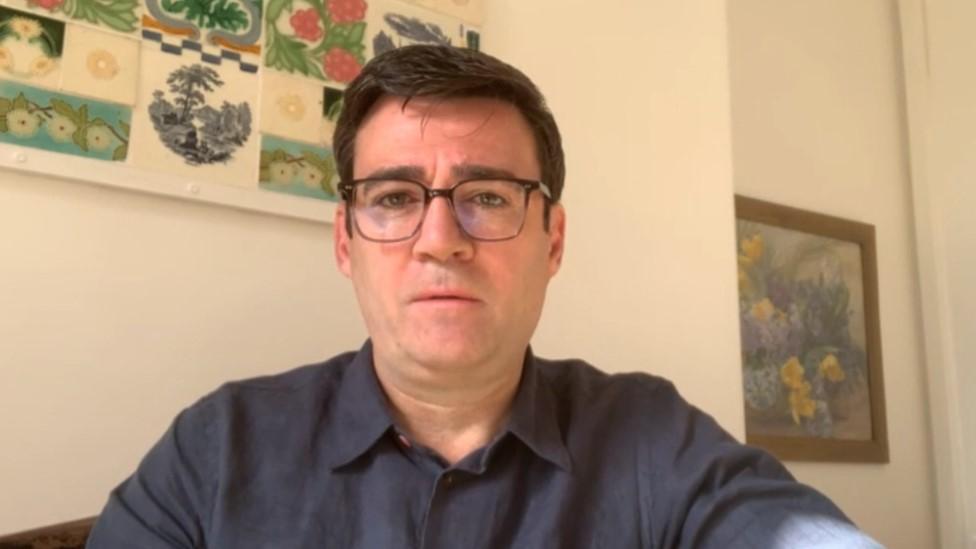
Andy Burnham said he felt the loss of the single UK "stay at home" message was "regrettable".
People should stay at home where possible, say mayors in England's biggest urban areas, warning that new lockdown rules are confusing.
The government's "conditional plan" to ease the lockdown includes a return to workplaces for some people.
Greater Manchester mayor Andy Burnham said the guidance was rushed and had increased risk "significantly".
London's Labour mayor Sadiq Khan said Boris Johnson's statement had caused confusion and "lacked clarity".
The prime minister announced that people could spend time outside and said those who could not work from home should return to the workplace - but avoid public transport.
Mr Burnham said: "People are being encouraged to return to work today but we don't have all the guidance for how best to run public transport - not everybody has a car.
"So some people will feel in a vulnerable position if they're forced on to public transport without the necessary procedures in place.
"This is why I'm saying it was rushed, this feels to me as though it's not been properly thought through."
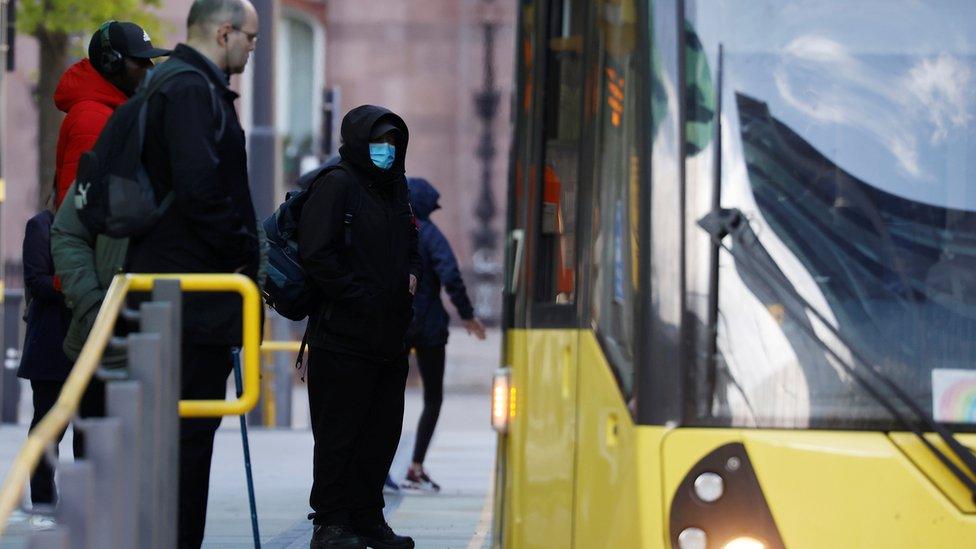
Andy Burnham said more guidance was needed on how public transport could operate safely
The document outlining new coronavirus lockdown rules , externalwas published on Monday afternoon and suggests, among various measures, face coverings on public transport.
London mayor Sadiq Khan said it was "not possible to adhere to social distancing rules" on public transport and urged urged people to "still stay at home".
He said: "The worst thing we can do is prematurely return and have a second spike that overwhelms the NHS.
"The vast majority of Londoners have been fantastic following the guidance, it's really important we continue to do so because we're still in lockdown.
"Even if we were to run 100% of tubes and buses... it is not possible to adhere to social distancing rules.
"So the key message from the prime minister last night and from me today, is do not use public transport. It is there for essential workers, particularly during rush hour."
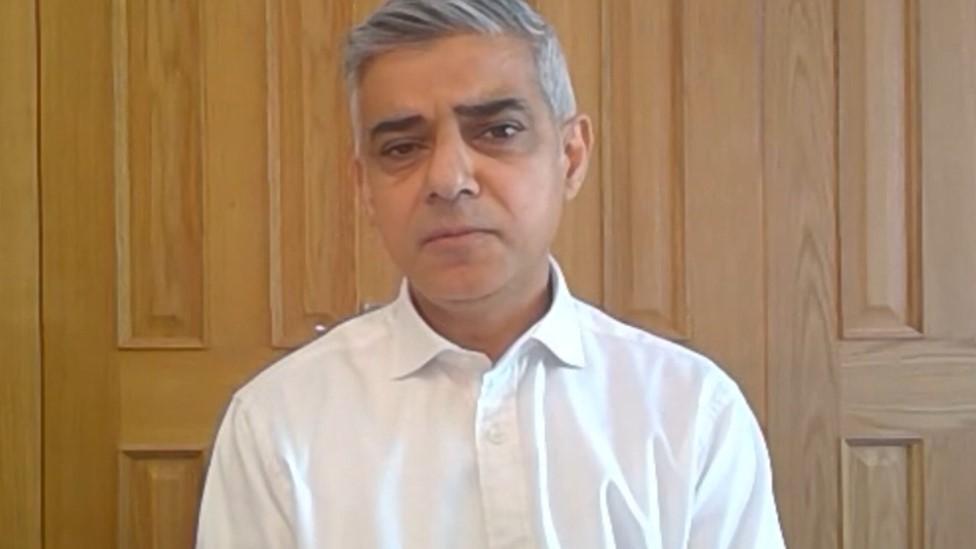
Sadiq Khan said "the vast majority of Londoners have been fantastic" during lockdown
Andy Street, the Conservative mayor of the West Midlands, said there would be a big step up in public transport but it was unclear how social distancing would be policed.
He said it was appropriate to ease lockdown restrictions "in very cautious ways" but stressed that health issues remained "paramount".
"Let's take what some people describe as baby steps now, subject to them proving to be safe," said Mr Street.
He said getting clarity on the advice was not possible in a 12-minute prime ministerial statement but that would come in the 50 pages of detailed advice revealed on Monday.
"Clarity has got to come in the next day."
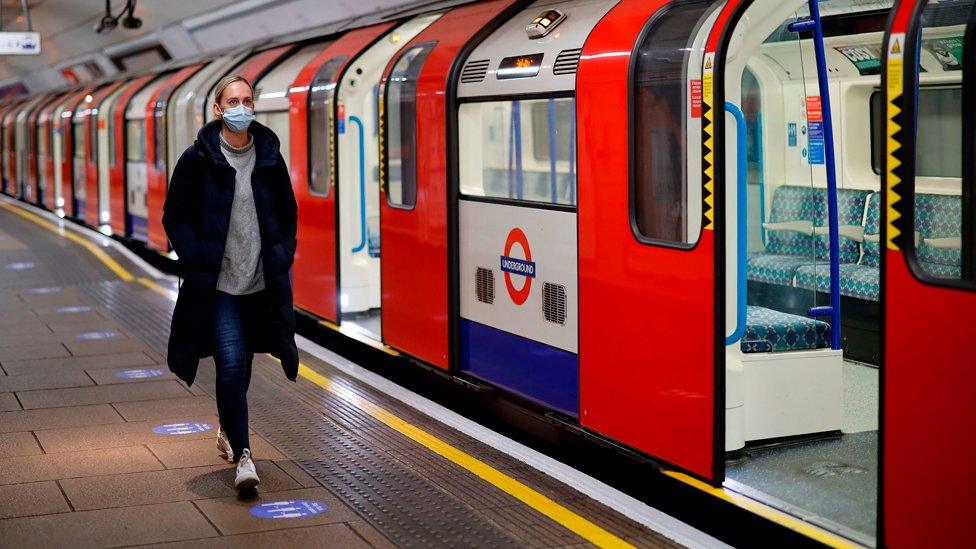
Adhering to social distancing rules on public transport is not possible, says Sadiq Khan
Liverpool City Region's mayor Steve Rotheram, said workers needed to be given "greater clarity and more assurance".
"As it stands, millions of workers are unsure if they should be going into work and, when they get there, how safe it will be," said Mr Rotheram.
Mr Burnham, a former Labour government minister, said he felt the loss of the single UK "stay at home" message was "regrettable" - and warned he might have to push a different message to the people of Greater Manchester.
"I've certainly seen more people out and about on the weekend and this is my concern. It seems premature to me, to make what are quite substantial changes," he said.
"I want to carry on working with the government, keeping that spirit of national unity, but then there may come a point here where I can't rule out saying to people, look, if the virus is spreading again we are going to have to go back to a much more cautious approach.
"And a stay at home approach.
"And, I feel that the risks have increased significantly here as a result of what was announced yesterday."
The prime minister was outlining more detail about the latest guidance during a speech to the Commons on Monday afternoon.

LOCKDOWN UPDATE: What's changing, where?
SCHOOLS: When will children be returning?
EXERCISE: What are the guidelines on getting out?
THE R NUMBER: What it means and why it matters
AIR TRAVELLERS: The new quarantine rules
LOOK-UP TOOL: How many cases in your area?
GLOBAL SPREAD: Tracking the pandemic
RECOVERY: How long does it take to get better?
A SIMPLE GUIDE: What are the symptoms?

- Published1 July 2022
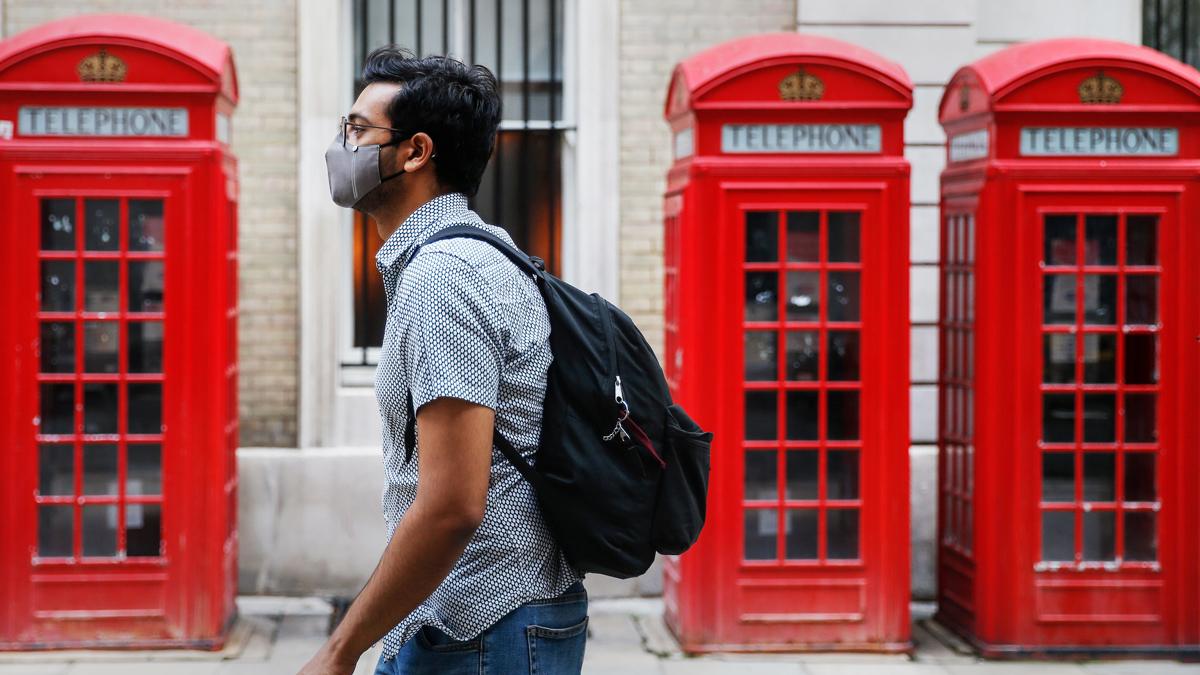
- Published11 May 2020
